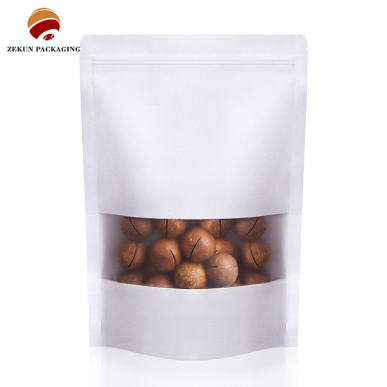

The shelf life of dry products is greatly affected by packaging, because once the packaging materials or packaging containers are unreasonable, it is easy to cause moisture regain or even agglomeration and mold growth of the dry products, resulting in unnecessary losses. The packaging of dry products should meet the following requirements:
(1) It can prevent the invasion of outside air, dust, insects, rodents, microorganisms, and odors.
(2) Do not penetrate outside light or avoid light.
(3) It has the characteristics of durability and firmness during storage, handling and sales. The packaging container will not be damaged under the conditions of falling from high altitude, high temperature and high humidity, immersion and rain.
(4) The size, shape and appearance of the packaging should be conducive to merchandise sales.
(5) Packaging materials in contact with food should meet food hygiene requirements, be non-toxic and harmless, and will not cause food denaturation or deterioration.
(6) Packaging costs should be low and reasonable.
The preservation of dry products is closely related to food composition, texture, and condition control of the drying process, and packaging containers are also critical to the transportation and storage of dry products.
Cartons and cartons are commonly used packaging containers for dry products, and there are also paper bags, paper cans and other packaging. Most dry products are packed in cartons and lined with moisture-proof packaging materials, such as waxed paper, parchment paper, and heat-sealable high-density polyethylene plastic bags. The cartons are usually color-printed paper, waxed paper, and fibers that can be tightly attached to the box. Film or aluminum foil is used as the outer packaging.
Dry products are often packaged in cellophane, coated cellophane bags, plastic film bags and composite film bags. The use of film materials for packaging occupies a small volume and light weight, and it can be used for vacuum or inert gas packaging. For fragile dry products, inflatable packaging can prevent the dry products from being damaged by pressure during transportation and storage or the packaging bags are pierced by hard dry products, and the packaging loses relevant functions. The aluminum foil in the composite film has the characteristics of being impermeable to light, moisture and oxygen.
Metal cans are ideal containers for packaging dry products. It has the characteristics of sealing, moisture-proof, insect-proof, firmness and durability, and can avoid rupture in a vacuum state, and can protect the dry product from being squeezed by external forces and maintain the original shape.
Glass bottles have high chemical stability, are insect-proof and moisture-proof containers, and some can be vacuum packed. The glass bottle packaging is transparent, allowing you to see the contents, and protect the dried products from being crushed. It can also be processed into brown to avoid light, can be recycled and reused, and can be made into a certain design shape. But glass bottles are easy to break and are heavy.

No comment yet, add your voice below!